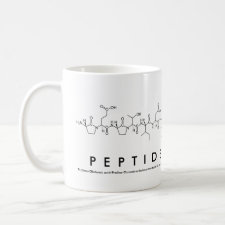
Authors: Liu CY, Lin CC, Wang GR
Article Title: Synthesis and evaluation of a novel monolithic column for capillary electrochromatographic separation of oligopeptides.
Publication date: 2005
Journal: Abstracts of Papers of the American Chemical Society
Issue: (ANYL)
Page numbers: 245.
Alternative URL: http://www.acs.org/portal/resources/ACS/Subportals/analytical/anyl_abstract_fall05.pdf
Abstract: A monolithic column for the separation of oligopepetides was prepared using L-phenylalanine as template and a covalent approach through the formation of Schiff base with ophthalaldehyde. o-Phthalaldehyde, allylmercaptan, L-phenylalanine and triethylamine were stirred at ambient temperature for 12 h, then methacrylic acid, 2-vinylpyridine, ethyleneglycol dimethacrylate,á,á-azobisisobutyronitrile and 1-propanol were added to the reaction mixture. The resulting material was introduced into the capillary column. Following thermal polymerization the template was then extracted with a mixture of HCl and methanol. The monolithic column was employed for the capillary electrochromatographic separation of oligopeptides. A capillary column of 75 (50) cm x 75 ìm I.D., sample injected in the hydrostatic mode (10 cm, 10s), with a mobile phase of phosphate buffer (pH 7.0, 40 mM)/methanol (5%, v/v), an applied voltage of +15 kV and detection at 214 nm, could baseline separate angiotensin I, angiotensin II, [Sar1, Thr8]angiotensin, oxytocin acetate, vasopressin, tocinoic acid, β-casomorphin bovine, β-casomorphin human and FMRF amide within 30 min. The results also compared with that of non-imprinted polymer (NIP). Although the analytes chosen were not directly responsible to the structure of the template, better separation with MIP than NIP was indicated. This work gives a different way for the usage of monolithic MIP column.
Template and target information: L-phenylalanine



Join the Society for Molecular Imprinting

New items RSS feed
Sign-up for e-mail updates:
Choose between receiving an occasional newsletter or more frequent e-mail alerts.
Click here to go to the sign-up page.
Is your name elemental or peptidic? Enter your name and find out by clicking either of the buttons below!
Other products you may like:
 MIPdatabase
MIPdatabase









